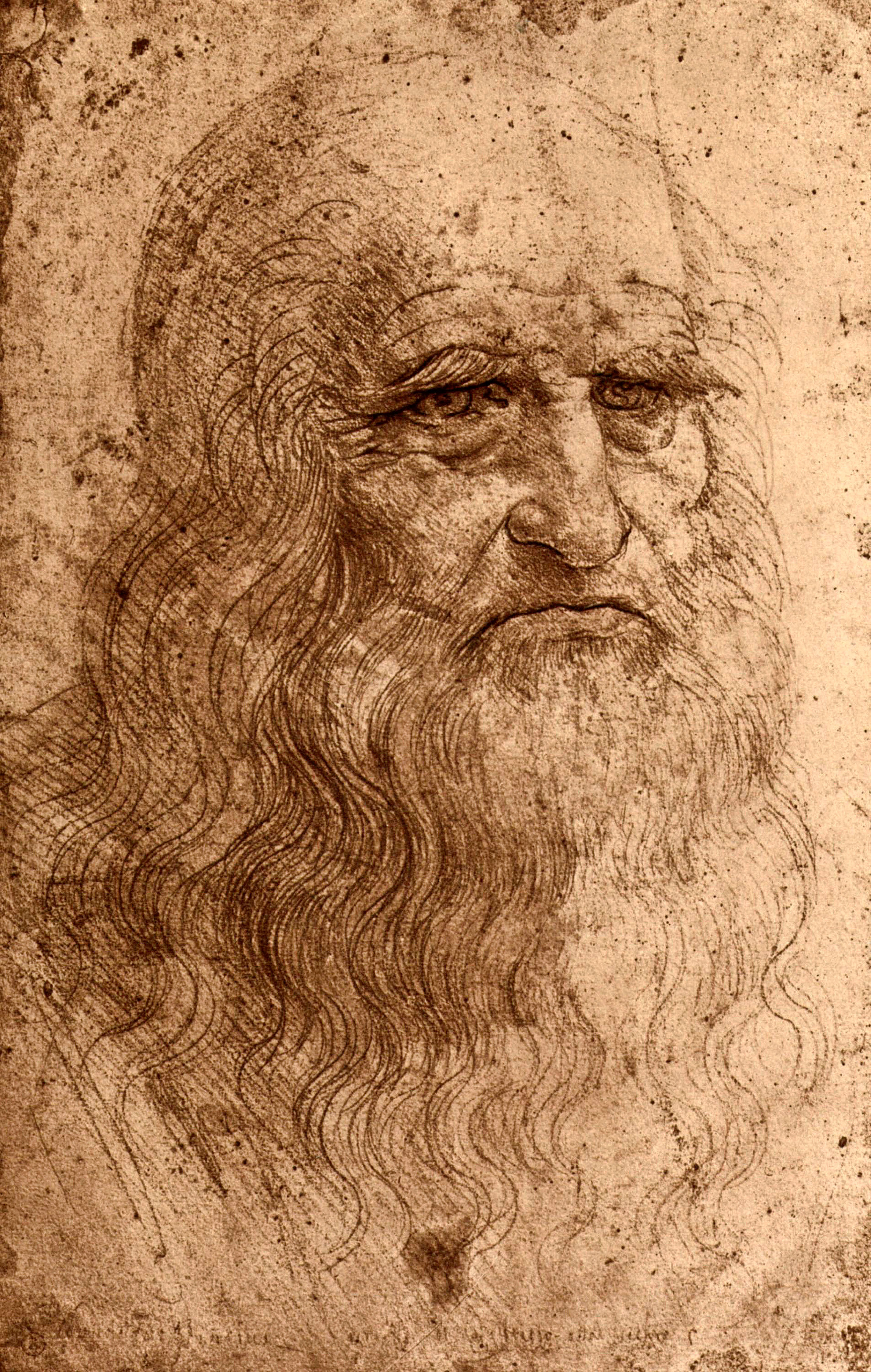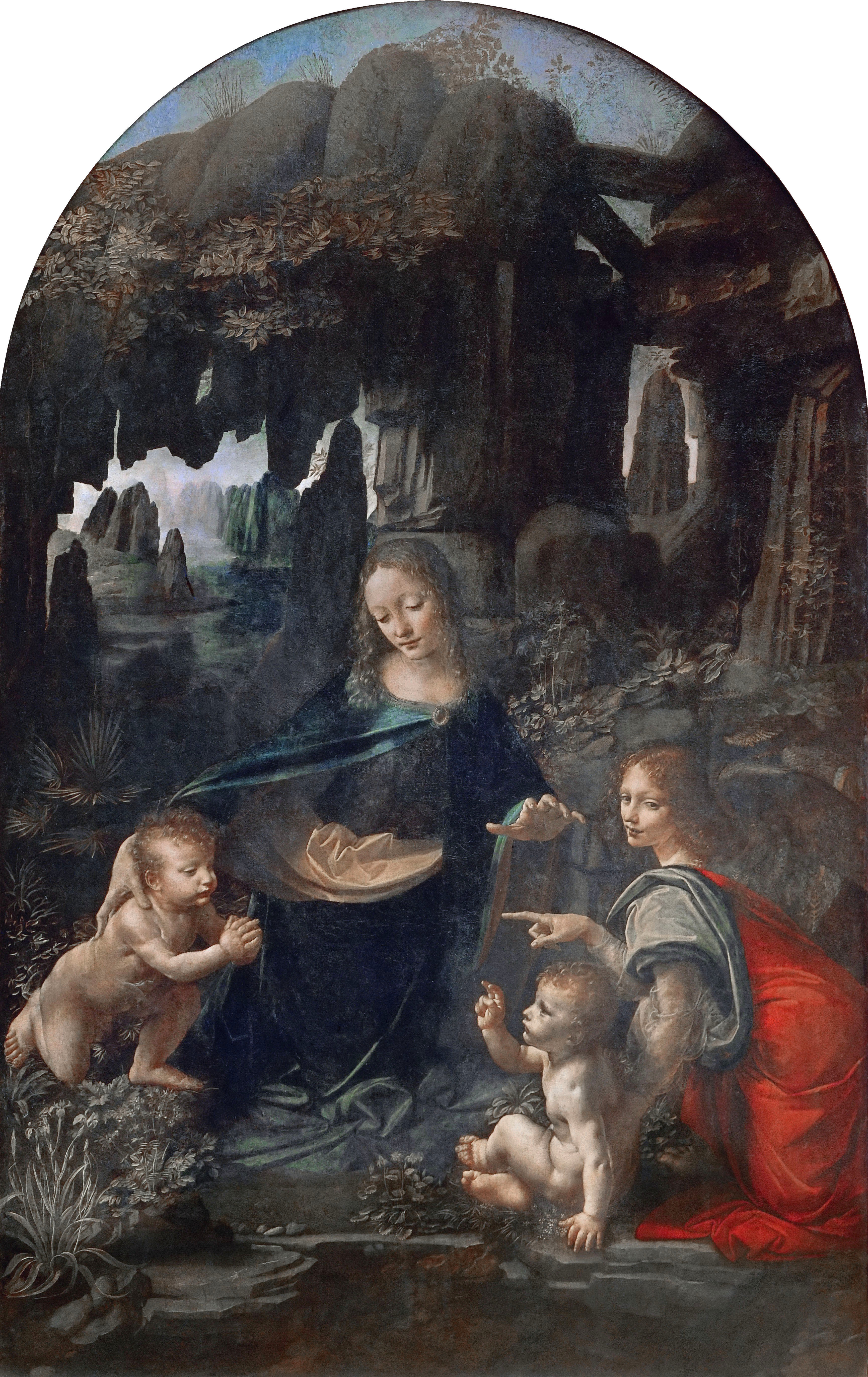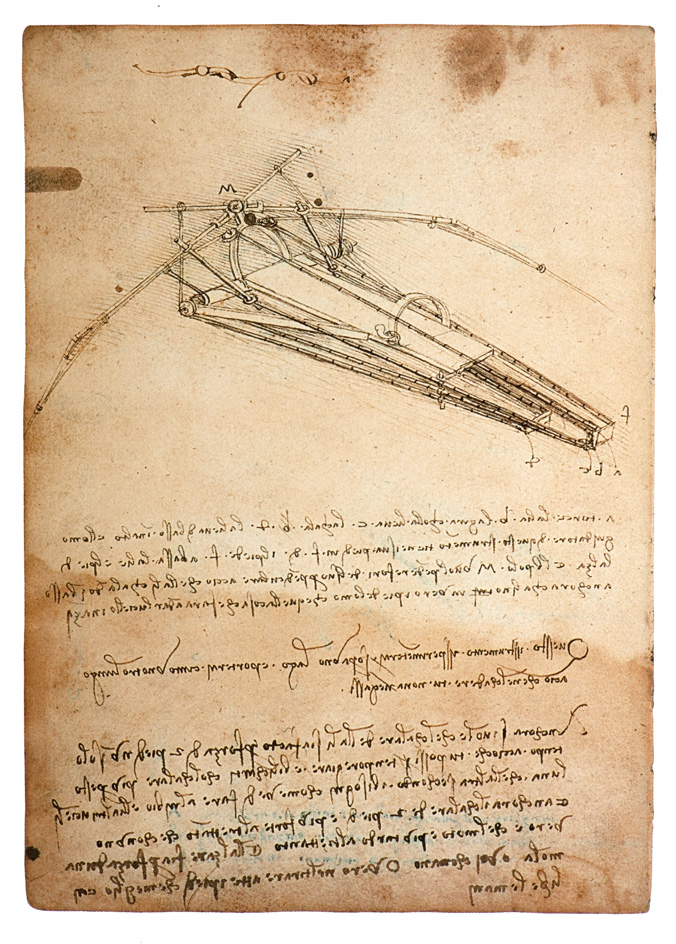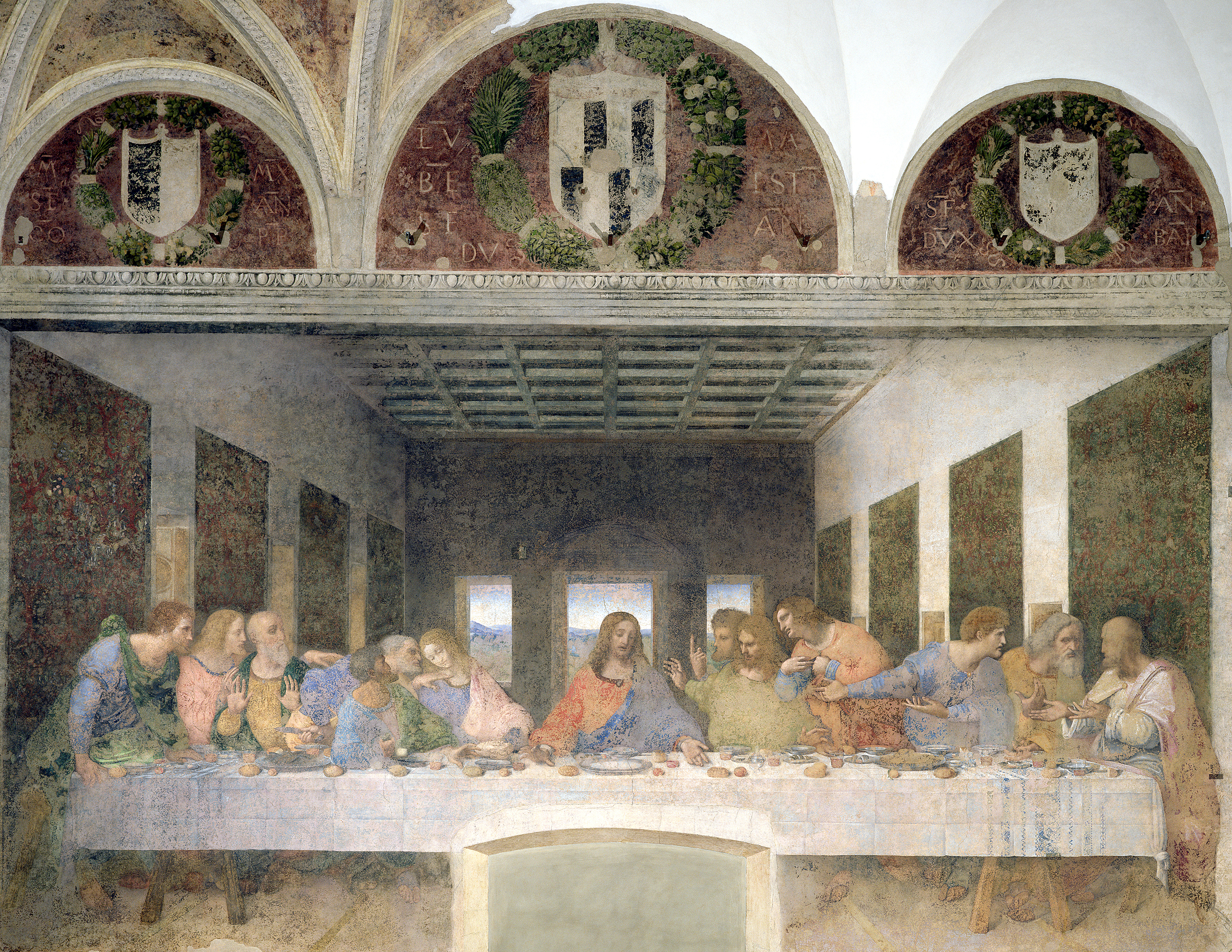Leonardo da Vinci << lee uh NAHR doh duh VIHN chee or lay uh NAHR doh duh VIHN chee >> (1452-1519) was one of the greatest painters and most versatile geniuses in history. He was one of the key figures of the Renaissance, a great cultural movement that had begun in Italy in the 1300’s. His portrait Mona Lisa and his religious scene The Last Supper rank among the most famous pictures ever painted.

Leonardo, as he is almost always called, was trained to be a painter. But his interests and achievements spread into an astonishing variety of fields that are now considered scientific specialties. Leonardo studied anatomy, astronomy, botany, geology, geometry, and optics, and he designed machines and drew plans for hundreds of inventions.
Because Leonardo excelled in such an amazing number of areas of human knowledge, he is often called a universal genius. However, he had little interest in literature, history, or religion. He formulated a few scientific laws, but he never developed his ideas systematically. Leonardo was most of all an excellent observer. He concerned himself with what the eye could see, rather than with purely abstract concepts.
Leonardo’s life
Early career.
Leonardo was born on April 15, 1452, probably outside the village of Vinci, near Florence in central Italy. The name da Vinci simply means from Vinci. At that time, Florence and its surrounding villages and farms made up a nearly independent area called a city-state. Florence was also a commercial and cultural center. Leonardo was the illegitimate son of Ser Piero da Vinci, a legal specialist, and a peasant woman named Caterina. Ser Piero’s family raised the boy in Vinci.
During the late 1460’s, Leonardo became an apprentice to Andrea del Verrocchio, a leading painter and sculptor in Florence. He remained with Verrocchio as an assistant for several years after completing his apprenticeship. Verrocchio and Leonardo collaborated on the painting The Baptism of Christ about 1472.
From about 1478 to 1482, Leonardo had his own studio in Florence. During this period, he received an important commission to paint a church altarpiece now known as the Adoration of the Magi.
Years in Milan.
Leonardo never finished the Adoration of the Magi because he left Florence about 1482 to become court artist for Ludovico Sforza, the Duke of Milan. Leonardo lived in Milan until 1499. He had a variety of duties in the duke’s court. As a military engineer, he designed artillery and fortresses. As a civil engineer, he devised a system of locks for Milan’s canals and designed revolving stages for pageants. As a sculptor, he planned a huge monument of the duke’s father mounted on a horse.

Return to Florence.
In 1499, the French overthrew Ludovico Sforza and forced him to flee Milan. Leonardo also left the city. He visited Mantua, where he made a famous drawing of Isabella d’Este, the wife of the Duke of Mantua. He also visited Venice briefly before returning to Florence.
Leonardo’s paintings during his stay in Milan had made him famous, and the people of Florence received him with great respect. The early work Leonardo had done in Florence before he left for Milan had strongly influenced a number of young artists, including Sandro Botticelli and Piero di Cosimo. These artists had become the leaders of the next generation of Florentine painters. The work Leonardo was to create after his return to Florence would inspire yet another generation of artists. This generation included Andrea del Sarto, Michelangelo, and Raphael.
When Leonardo returned, Florence was building a new hall for the city council. The Florentine government hired Leonardo and Michelangelo to decorate the walls of the hall with scenes of the city’s military victories. Leonardo chose the Battle of Anghiari, in which Florence had defeated Milan in 1440. His painting showed a cavalry battle, with tense soldiers, leaping horses, and clouds of dust.
In painting the Battle of Anghiari, Leonardo tried an experimental technique that did not work. The paint began to run, and he never finished the project. The painting no longer exists. Its general appearance is known from Leonardo’s sketches and from copies made by other artists. About 1503, while working on the Battle of Anghiari, Leonardo began painting the Mona Lisa, probably the most famous portrait ever painted. He may have completed it only after he moved to France in 1516.
Last years.
In 1513, Pope Leo X gave Leonardo rooms for his use in the Vatican Palace. Leonardo did little painting during his later years. However, about 1515, he completed The Deluge, a series of drawings in which he portrayed the destruction of the world in a tremendous flood. These drawings are the climax of Leonardo’s attempts to visualize the forces of life and nature.
Renaissance rulers competed to surround themselves with great artists and scholars. In 1516, Francis I, the king of France, invited Leonardo to become “first painter and engineer and architect of the king.” He provided Leonardo a residence connected to the Palace of Cloux at Amboise, near Tours. Leonardo devoted his time to doing anatomical drawings, drafting architectural plans, and designing sets for court entertainments. He died on May 2, 1519.
Leonardo’s works
Drawings and scientific studies.
Leonardo used drawings both as a tool of scientific investigation and as an expression of artistic imagination. He changed forever the art of drawing. He made drawings in much greater numbers than any artist before him, and he was one of the first artists to use sketches to work out his artistic and architectural compositions. Drawing was indispensable to Leonardo’s processes of observation, creation, and invention.
Physical sciences.

Life sciences.
Leonardo studied anatomy by dissecting human corpses and the bodies of animals. He made scientific drawings that clarify not only the appearance of bones, tendons, and other body parts, but also their function. These drawings are considered the first accurate portrayals of human anatomy.
Leonardo tried to understand the human body as a mechanism. As his studies progressed, he also tried to understand the forces of life that animated the body. His drawings of anatomy, for example, extended to investigations of human reproduction and embryology and the circulation of the blood. None of these things were understood at the time. His anatomical drawing of a female, which he made about 1508, is his attempt, partly erroneous in detail, to illustrate the body’s circulatory and other systems in a single image.
Like other artists, Leonardo was interested in the proportions of the human body. He drew a famous study of human proportions based on the statement of the Roman architect Vitruvius that the “well-shaped man” fits into the perfect shapes of the square and circle. According to Vitruvius, the parts of the body are related to one another in ratios of whole numbers, and these ratios should be used in the design of architecture. Leonardo’s drawing of the Vitruvian man, done about 1487, is one of the most famous images in European art. 
Leonardo also worked to understand the relation between the life of the human body and that of the larger world. For Leonardo, principles of proportion similar to those that shaped the human body also governed the growth of trees, the flight of birds, and the flow of water. When Leonardo drew the leaves of a plant, he intended the lines to show living energy responding to light, water, and soil. The mystery of life was the unifying theme of his work.
Leonardo’s notebooks.
Leonardo planned to write books on many subjects, including painting, human movement, and the flight of birds, but he never completed any of them. The writings exist in partial drafts and fragments in notebooks. Leonardo’s notebooks also include his scientific observations and ideas for inventions, as well as detailed drawings. Most of the notebooks were not published until nearly 400 years after Leonardo’s death. By the time his scientific and technical investigations became widely known, other people had come up with the same ideas.
Paintings.
For much of his life, Leonardo was interested in optics, which is concerned with the properties of light. Leonardo carefully analyzed such things as the pattern of light and shadow on a sphere before a window. The understanding he gained from such study is evident in the rich effects of light, dark, and color in such paintings as the Mona Lisa and The Virgin and Child with Saint Anne (early 1500’s). 
Leonardo also explored the techniques of perspective, which painters use to create an illusion of depth on a flat surface. Florentine artists began to use these techniques in the early 1400’s. Linear perspective is based on the optical illusion that parallel lines seem to converge as they recede toward one point, called a vanishing point. Aerial perspective is based on the fact that light, shade, and color change with an object’s distance from the viewer.
Early paintings.
Verrocchio and Leonardo shared the work of painting The Baptism of Christ. Leonardo painted the left angel, the distant landscape, and possibly the skin of Christ. Leonardo’s parts of the painting, with their soft shadings and shadows concealing the edges, are an early example of the sfumato (smoky) quality of his paintings. Verrocchio’s figures, on the other hand, are defined by hard lines typical of early Renaissance painting. Leonardo’s more graceful approach marked the beginning of the High Renaissance style, which did not become popular in Italy until about 25 years later.
Leonardo’s Adoration of the Magi exists today in an unfinished form, with the figures visible only as outlines of contrasting light and dark areas. This kind of composition is called chiaroscuro, a word which combines the Italian words for light and dark. Chiaroscuro is characteristic of the High Renaissance style.
The Adoration of the Magi shows three kings worshiping the newborn Christ child. Leonardo abandoned the traditional treatment of this popular subject. Earlier versions showed the figures in profile, with the Virgin Mary and Jesus on one side of the painting and the kings on the other. To give the Holy Family more emphasis, Leonardo placed them in the center, facing the viewer. The kings and other figures form a semicircle around Mary and Jesus. Leonardo sharply contrasted foreground and background. Strong light-dark contrasts and simple geometric forms were basic features of Leonardo’s mature style as a painter.
In the Adoration of the Magi, Mary and the Christ child are arranged in a pyramid shape. Leonardo also used this arrangement in other paintings, including the Madonna of the Rocks and The Virgin and Child with Saint Anne. In The Virgin and Child with Saint Anne, the gazes of all the figures are concentrated on one side of the pyramid, giving it a new psychological and dramatic unity.
The Last Supper.
Leonardo finished painting The Last Supper about 1497. He created the famous scene on a wall of the dining hall in the monastery of Santa Maria delle Grazie. The painting shows the final meal of Jesus Christ and His 12 apostles. Jesus has just announced that one of them will betray him.

When painting The Last Supper, Leonardo rejected the fresco technique normally used for wallpaintings. The technique requires an artist to mix dry pigments with water and brush them onto damp, freshly laid plaster. An artist who uses the fresco method must work quickly. But Leonardo wanted to paint slowly, to revise his work, and to use shadows–all of which would have been impossible in fresco painting. He developed a new technique that involved coating the wall with a compound he had created. But the compound, which was supposed to hold the paint in place and protect it from moisture, did not work. Soon after Leonardo completed the picture, the paint began to flake away. The Last Supper still exists, but in poor condition, though many attempts have been made to restore it.
Leonardo also changed the traditional arrangement of the figures. Christ and His apostles are usually shown in a line, with Judas, the betrayer, set apart in some way. Leonardo painted the apostles in several small groups. Each apostle responds in a different way to Christ’s announcement that one of them will betray Him. Jesus sits in the center of the scene, apart from the other figures. Leonardo’s composition creates a more active and centralized design than earlier artists had achieved. The composition, in which the space recedes to a point behind the head of Christ, is one of the great examples of one-point perspective in Italian Renaissance painting. Leonardo used linear perspective to focus attention on the painting’s religious and dramatic center, the face of Jesus Christ.
Mona Lisa,
shown in this article, is probably a portrait of the young wife of a rich Florentine silk merchant, Francesco del Giocondo. Mona Lisa is a shortened form of Madonna Lisa (my lady, Lisa). The woman is also often called La Gioconda, which is the feminine form of her husband’s last name. 
The portrait shows a young woman seated on a balcony high above a landscape. Leonardo used a pyramid design to place the woman simply and calmly in the space of the painting. Her folded hands form the front corner of the pyramid. Her breast, neck, and face glow in the same light that softly models her hands. The light softens the painting’s underlying geometry of spheres and circles, which includes the arc of her famous smile, and gives the texture of living surfaces to the geometric shapes. Behind the figure, a vast landscape recedes to icy mountains. Winding paths and a distant bridge give only the slightest indications of human presence. The landscape reflects Leonardo’s studies of geology. He was one of the first people to grasp that geological time is revealed in rock layers and to understand such processes as erosion.
Leonardo’s importance
Leonardo had one of the greatest scientific minds of the Italian Renaissance. He wanted to know the workings of what he saw in nature. Many of his inventions and scientific ideas were centuries ahead of his time. For example, he was the first person to study the flight of birds scientifically. Leonardo’s importance to art was even greater than his importance to science. He had a strong influence on many leading artists, including Raphael and Michelangelo. Leonardo’s balanced compositions and idealized figures became standard features of later Renaissance art. Painters also tried to imitate Leonardo’s knowledge of perspective and anatomy, and his accurate observations of nature.
What most impresses people today is the wide range of Leonardo’s talent and achievements. He turned his attention to many subjects and mastered nearly all. His inventiveness, versatility, and wide-ranging intellectual curiosity have made Leonardo a symbol of the Renaissance spirit.
See also Helicopter (Early designs and experiments); Last Supper, The; Mona Lisa; Painting (The 1400’s); Renaissance (The fine arts).
